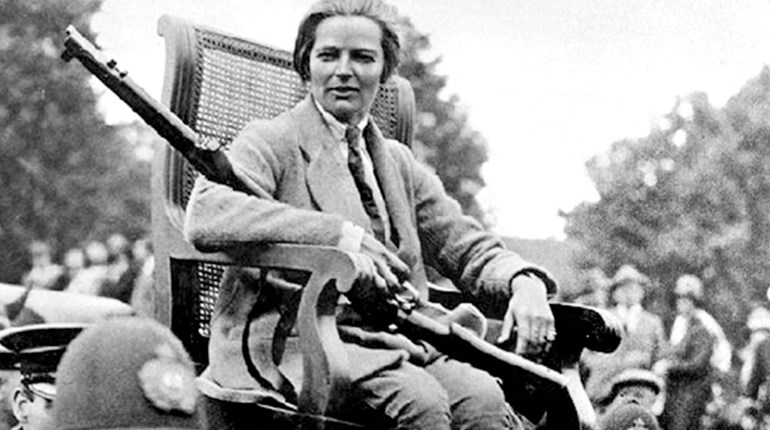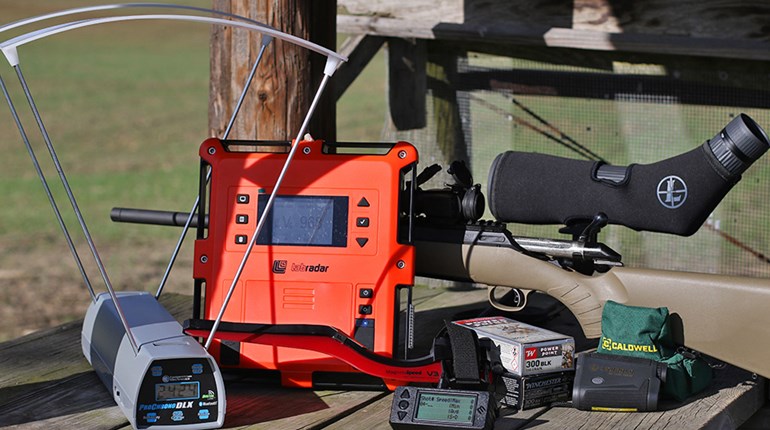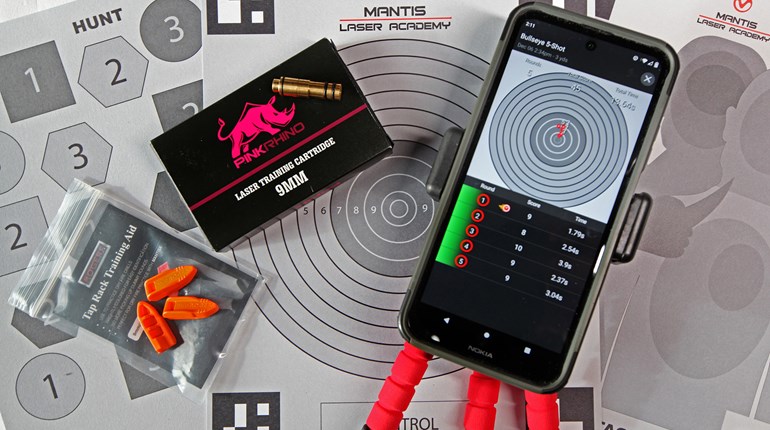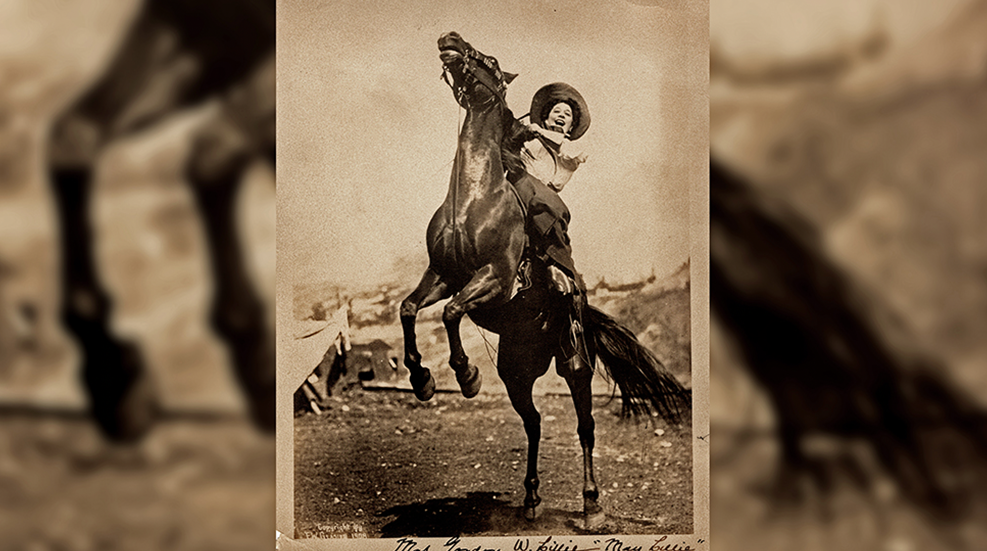
"Let any normally healthy woman who is ordinarily strong screw up her courage and tackle a bucking bronco, and she will find the most fascinating pastime in the field of feminine athletic endeavor. There is nothing to compare, to increase the joy of living, and once accomplished, she'll have more real fun than any pink tea or theater party or ballroom ever yielded.”
You may have heard this quote before, but didn’t know who it was attributed to. May Lillie, billed as “the Greatest Lady Horseback-rifle shot of the World” on the colorful posters that piqued the curiosity of patrons to the Pawnee Bill Historic Wild West spectacle, wowed audiences by blasting target after target with her accurate shooting—all while riding sidesaddle on a horse. In contrast to the other lady sure-shots of the time, such as Annie Oakley and Lillian Smith from William “Buffalo Bill” Cody’s show, May didn’t get her start in shooting competitions. May was a college-educated city-girl from Pennsylvania, who didn’t grow up shooting.
Born in 1869, Mary Manning was raised a Quaker in Philadelphia. Her father was a physician, and since Mary was named after her mother, she went by “May.” May went on to attend the prestigious Smith College, where during her sophomore year she ventured to see the Buffalo Bill Wild West Show when it came to town. As the parade of arriving performers filled the streets, May caught the eye of a man as he rode by on horseback. Throwing a smile in his direction is how she met her future husband Gordon Lillie, nicknamed “Pawnee Bill” for his role as the Pawnee interpreter in Buffalo Bill’s crew.
“... she said right then, she knew, that ‘she could change the course of her life with a well-directed smile.’ Pawnee Bill said for the rest of his life, that the first time he saw May, he was instantly in love,” noted Pawnee Bill Ranch Historical Interpreter Anna Davis in a podcast.
A decade older than she, Gordon courted 15-year-old May for two years until she graduated from college. They were married in 1886. May has been quoted as saying that as a wedding gift Gordon gave her a Marlin .22 target rifle and a pony, perhaps as a subtle suggestion as to what her future career might be. May is seen in one photograph holding a Marlin Ballard gallery gun, perhaps the one she was gifted by her husband.
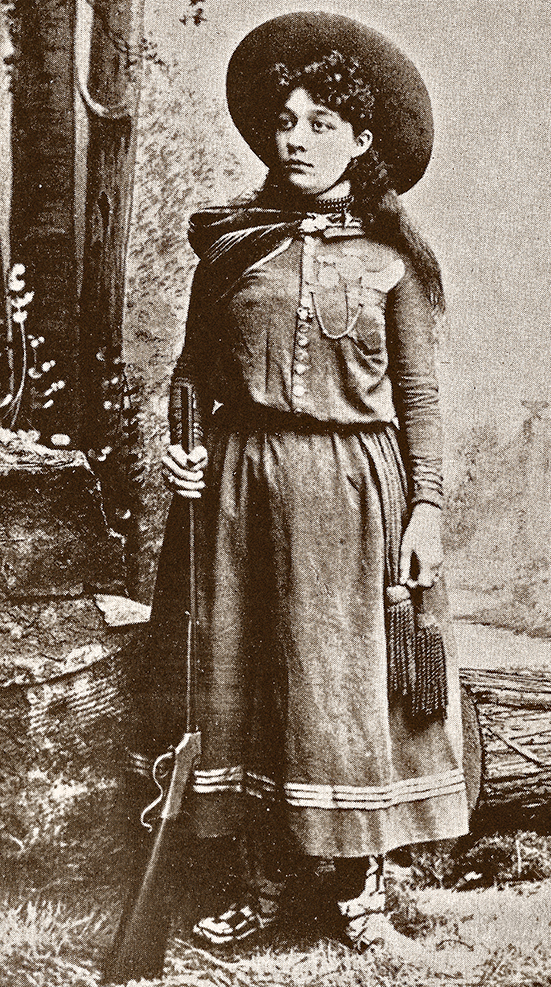 :
:
A young May holding a Marlin Ballard rifle in her early performing days. Source: FindAGrave.com
Almost two years into their marriage, during which time Gordon had continued working with Buffalo Bill, the couple decided to launch their own Wild West show. Gordon taught May to shoot. She started by picking off prairie chickens, before moving on to the inanimate targets of a Wild West show. Gordon thought it would be dynamic for May to pair her trick shooting with trick riding, earning the show billing “The only lady horseback shot” in an effort to one-up his previous employer’s star attraction, Annie Oakley. May became an expert rider, insisting on always wearing a full-length skirt and only riding sidesaddle in her performances.
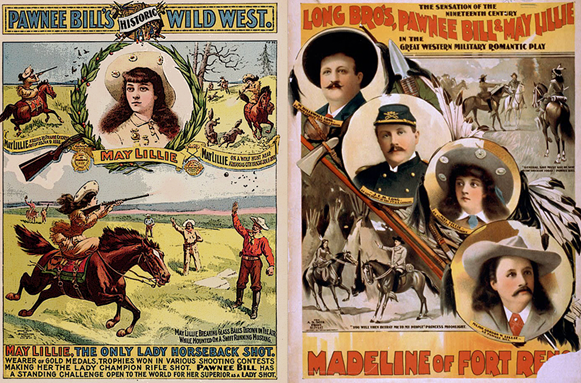
Left, a poster advertising May in the Pawnee Bill Historic Wild West show. Right, a poster from a film that May and Gordon starred in. No known copies of the movie exist. Source: Library of Congress
Early pictures of the couple show May toting a .22 caliber Flobert “parlor” rifle with an octagon barrel. French Flobert pistols and rifles fired .22 BB or CB Caps, a type of low-velocity cartridge that was designed to be fired indoors in a person’s home, thus a safe choice to be used in a Wild West show performance that took place in an urban environment. Double-barrelled shotguns were also a favorite choice in trick shooting. Annie Oakley favored Lancaster, Parker Brothers and Hambrusch shotguns.
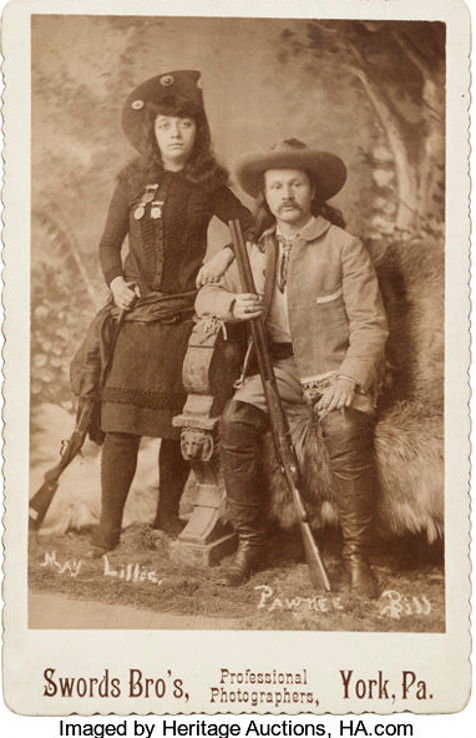
May is holding a Flobert rifle and can be seen wearing medals she won in shooting competitions after Gordon taught her how to shoot. Courtesy of Heritage Auctions.
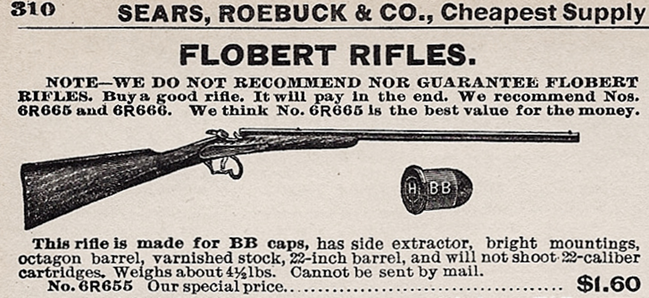
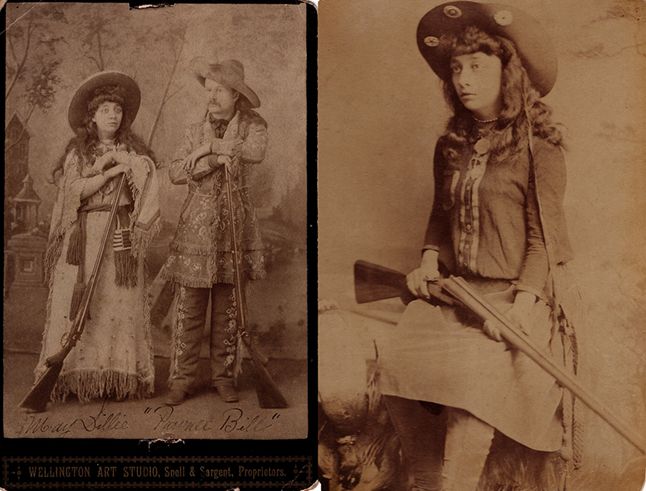
Various hammer-fired and hammerless double-barrelled shotguns were used by the Lillies in their show. Photos courtesy of the Pawnee Bill Ranch and Museum
Also pictured with the couple is an 1873 Winchester lever action rifle. Instead of the typical rifled barrel that imparts a spin on a bullet to give it accuracy over a long distance, many of the Wild West acts used smoothbore rifles and pistols that would fire shot cartridges that would send out a spray of pellets like a shotgun. Not only were shot cartridges safer to use around an audience within a city landscape, they also provided a little more insurance that the performer would hit their target.
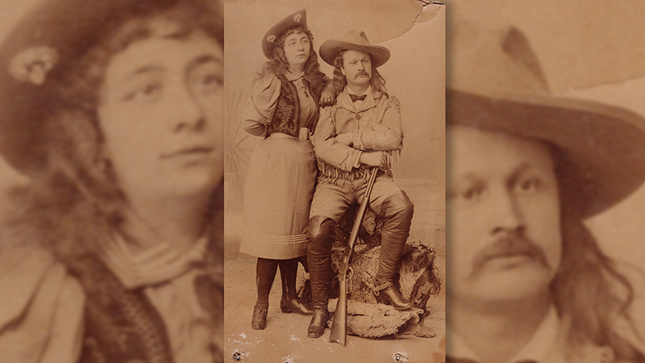
May and Gordon with an 1873 Winchester. Photo courtesy of the Pawnee Bill Ranch and Museum
While the first year of their traveling show wasn’t financially successful, the Lillies regrouped and altered the show to feature a Native American museum and encampment, which proved to be of great interest to patrons in the cities where the show toured.
Together May and Gordon performed shooting acts, taking turns holding or throwing targets. Filled glass balls would be tossed into the air and May would shatter them with her shots before they reached the ground—all while riding. During one show, when it was May’s turn to hold a target for her husband, an accident occurred and two of her fingers sustained injuries. Amputation was eventually required, and thereafter May was keen to keep her right hand gloved or hidden in photographs throughout the rest of her life.
Erin Brown, a Pawnee Bill Ranch and Museum curator relays the story during a podcast: “...this injury certainly put an end to that joint shooting act. They didn't do it again. We do know that May never again did target shooting with a rifle.” May switched to using a pistol for her target shooting acts, possibly because her injury made it difficult to work the lever of her rifle. The museum has May’s Smith & Wesson .32 revolver that she had modified to fire .22 rimfire cartridges.
The show eventually morphed into the Pawnee Bill’s Great Far East show, complete with a diverse cast of performers and animals from around the world. Gordon decided to partner their show with Buffalo Bill Cody’s, a decision that May was not in favor of for financial reasons. So it was that she ended her performing career after 20 years, and settled back at their ranch in Pawnee, Oklahoma in 1908. The iconic photograph of May aiming a revolver (which appears to be a large-caliber Colt single action) at the camera was taken the same year she retired from the show.
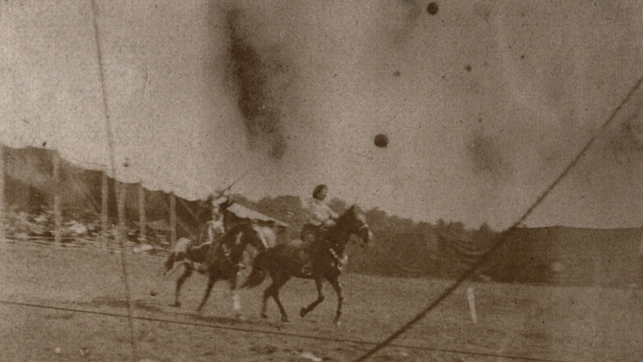
Fellow female famous sharpshooter Lillian Smith joined the Pawnee Bill show in the early 1900s and can be seen at left taking aim at airborne targets. Photo courtesy of the Pawnee Bill Ranch and Museum
After decades of Wild West entertainment through shows, novels and movies, the public’s interest in the “Wild West” began to wane by the early 1900s. Gordon parted ways with Buffalo Bill’s financially troubled production in 1913 and returned to the ranch with May.
While May was very fond of children, a surgery at the birth of their first child (who died a few weeks later) prevented her from having more. After retiring from show business, the Lillies adopted a baby boy, Billy. Tragedy struck again years later, when the 8-year-old boy died in an accident on the ranch.
May dedicated herself to the management of their ranch—the employees who were like family, the property improvements and the livestock herds. A goal of the Lillies was to preserve the American bison, and at one time they had almost 200 grazing on their 2,000 acres of prairie. Gordon also raised Scottish shorthorn cattle, and a number of different animals resided on the ranch — bears, goats, chickens and peacocks. Gordon and May spent their “retirement” years expanding their ranch to include a reproduction of an Old West town, a blacksmith shop and many barns and buildings that attracted crowds to their annual rodeos and events.
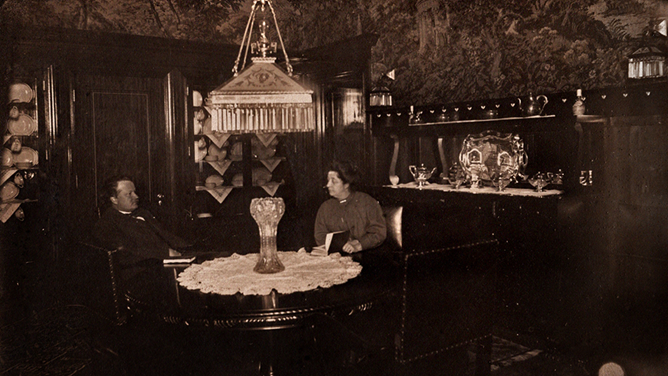
The Lillies at their home in Oklahoma after retiring from the Wild West show business. Photo courtesy of the Pawnee Bill Ranch and Museum
In 1936, shortly after celebrating 50 years of marriage, Gordon and May were in a car accident that ended May’s life. Her husband, who was deeply saddened to have lost the love of his life, passed away in 1942.
Davis said that many firearms that are personally attributed to Pawnee Bill and May Lillie are floating around on the internet and that some have fake markings or a false story to increase their value. “Pawnee Bill gave stuff to everyone,” she said. Gordon often had his name inscribed on guns, including many Colt single actions, that he gifted to friends and family.
In one of the museum’s podcasts they describe an incident of a pistol that appeared on the Pawn Stars T.V. show. Curator Erin Brown relayed the story: “...a gentleman presented the store with an 1838 Colt Paterson pistol that supposedly belonged to May Lillie's father. The pistol was presented in a red leather case that had an inscription that read: To Gordon William Lillie Pawnee Bill Interpreter of the Pawnee and May Manning Lillie from William F. Cody Buffalo Bill.” In the podcast Brown and Davis went on to debunk the show’s authentication of the pistol’s provenance.
The Blue Hawk Peak area in Oklahoma that the Lillies established as their home and a reserve for the bison over a hundred years ago remains intact even today. Whittled down to 500 acres, a herd of about 60 buffalo roam around the ranch, which has been open as a museum since the 1960s. An annual Wild West Fest at the museum allows patrons to see performances of routines taken from the original Pawnee Bill Wild West Show.
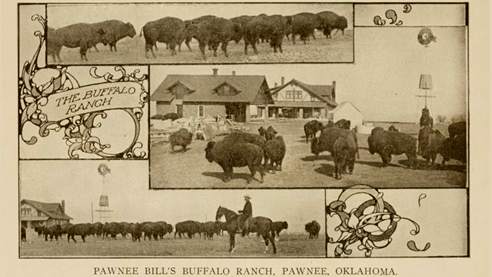
The Pawnee Bill Ranch in 1911 with its American bison herds. Source: Library of Congress
The Pawnee Bill Ranch and Museum has a wide collection of firearms that offer a “snapshot” of the types of guns used in Wild West shows — from Colt revolvers, to blackpowder rifles, to foreign military rifles. They also have one of the Lillies’ 1892 Winchester rifles that they used in their performances on display.
As Brown said in a museum podcast about historical firearms, “Wild West Shows painted a glamorous portrait of the West that the paying public bought into. Firearms of this era, likewise, have a special fascination, and guns are inextricably tied to the historical drama of the United States of America.”
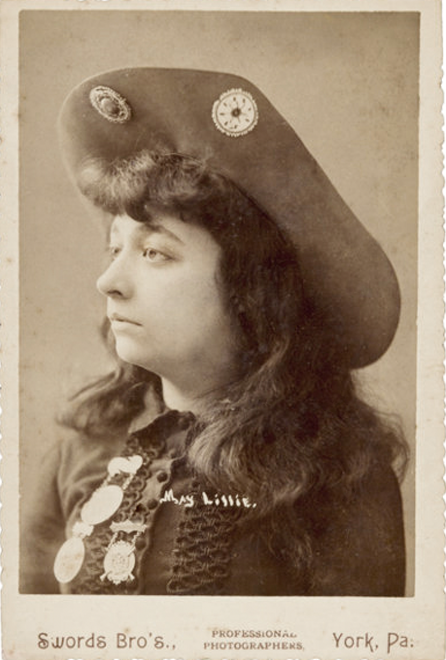
Courtesy of Heritage Auctions












